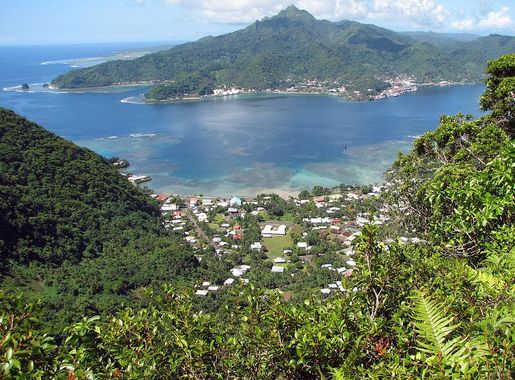
Pago Pago: The Heartbeat of American Samoa
Discover Pago Pago: A tropical paradise where lush landscapes, rich traditions, and warm hospitality create an unforgettable travel experience in American Samoa.
Nestled in the lush, green landscapes of American Samoa, Pago Pago offers a unique blend of natural beauty and rich cultural heritage. This small yet vibrant city is the gateway to an enchanting world of tropical rainforests, pristine beaches, and crystal-clear waters. Visitors will be captivated by the welcoming spirit of the Samoan people and the island's unspoiled charm. Pago Pago is renowned for its stunning harbor, which is one of the deepest natural harbors in the South Pacific. The iconic Rainmaker Mountain looms over the city, providing a dramatic backdrop that is perfect for photography. Adventurous travelers can hike to the summit for breathtaking panoramic views of the island and the surrounding ocean. Cultural enthusiasts will find plenty to explore in Pago Pago. The Jean P. Haydon Museum offers a fascinating glimpse into the history and traditions of American Samoa, while the Fagatogo Market is the ideal place to experience local life and sample delicious Samoan cuisine. Additionally, Pago Pago's vibrant festivals and events, such as the annual Flag Day celebration, showcase the island's rich cultural tapestry.
Local tips in Pago Pago
- Visit the Jean P. Haydon Museum to understand the island's history and culture.
- Hike Rainmaker Mountain early in the morning to avoid the midday heat and enjoy clear views.
- Try the local delicacies at Fagatogo Market for an authentic taste of Samoan cuisine.
- Respect local customs and dress modestly, especially when visiting villages and cultural sites.
- Carry cash, as many small businesses and markets do not accept credit cards.
Pago Pago: The Heartbeat of American Samoa
Nestled in the lush, green landscapes of American Samoa, Pago Pago offers a unique blend of natural beauty and rich cultural heritage. This small yet vibrant city is the gateway to an enchanting world of tropical rainforests, pristine beaches, and crystal-clear waters. Visitors will be captivated by the welcoming spirit of the Samoan people and the island's unspoiled charm. Pago Pago is renowned for its stunning harbor, which is one of the deepest natural harbors in the South Pacific. The iconic Rainmaker Mountain looms over the city, providing a dramatic backdrop that is perfect for photography. Adventurous travelers can hike to the summit for breathtaking panoramic views of the island and the surrounding ocean. Cultural enthusiasts will find plenty to explore in Pago Pago. The Jean P. Haydon Museum offers a fascinating glimpse into the history and traditions of American Samoa, while the Fagatogo Market is the ideal place to experience local life and sample delicious Samoan cuisine. Additionally, Pago Pago's vibrant festivals and events, such as the annual Flag Day celebration, showcase the island's rich cultural tapestry.
When is the best time to go to Pago Pago?
Iconic landmarks you can’t miss
Sadie's by the Sea
Discover the paradise of Pago Pago at Sadie's by the Sea, where comfort meets breathtaking ocean views and authentic island hospitality.

Papaseea Sliding Rocks
Discover the exhilarating experience of sliding down natural rock formations at Papaseea Sliding Rocks in Samoa, a must-visit attraction for thrill-seekers and nature lovers.
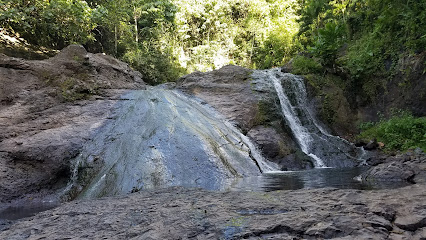
Laufou Shopping Center
Discover the vibrant shopping and dining experiences at Laufou Shopping Center in Nu'uuli, where local culture comes alive in every corner.
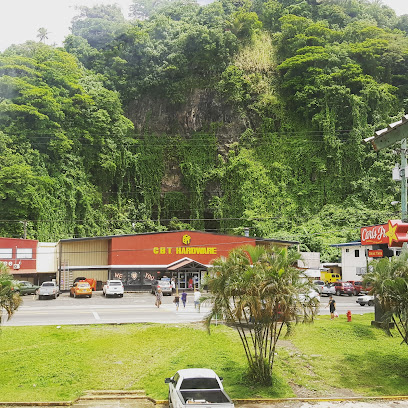
Regal Nu'uuli Place Twin
Discover the magic of movies at Regal Nu'uuli Place Twin, a top-notch cinema in the heart of Pago Pago, American Samoa, offering the latest films and a vibrant atmosphere.
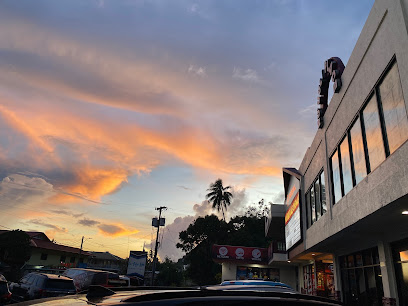
National Park of American Samoa
Explore the breathtaking landscapes and rich cultural heritage of the National Park of American Samoa, a hidden gem in the South Pacific.
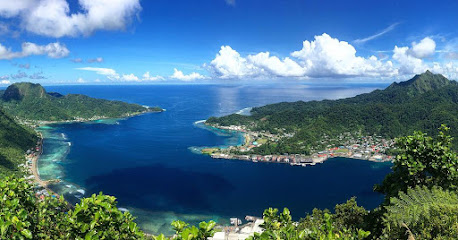
Pago Pago International Airport
Experience the warmth and beauty of American Samoa at Pago Pago International Airport, your gateway to a tropical paradise filled with culture and adventure.
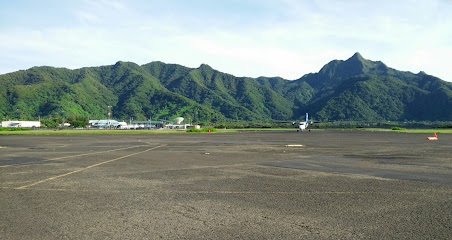
Tisa's Barefoot Bar
Discover Tisa's Barefoot Bar in American Samoa, where delicious island cuisine meets breathtaking views, all while dining with your toes in the sand.
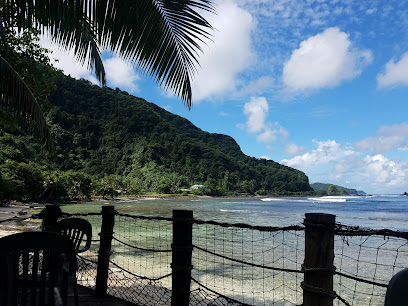
Pago Pago Harbour
Experience the serene beauty of Pago Pago Harbour, a natural paradise in American Samoa ideal for water activities, cultural experiences, and breathtaking views.
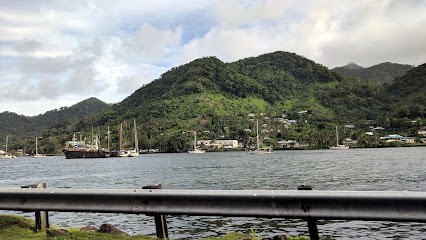
National Park of American Samoa Visitor Center
Discover the beauty and culture of American Samoa at the National Park of American Samoa Visitor Center, your gateway to adventure and education.
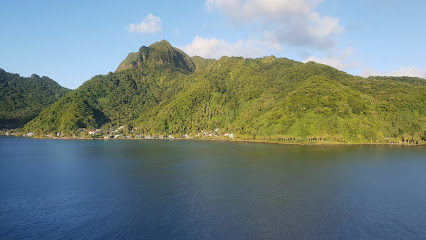
Pritchard's Bakery
Explore the authentic flavors of Samoa at Pritchard's Bakery, where every bite tells a story of tradition and quality.
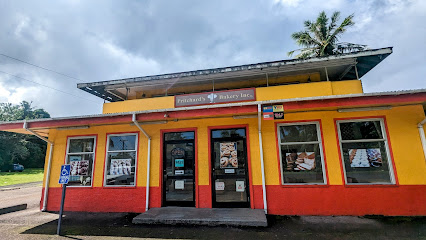
Milovales Burgers and Fish & Chips
Experience the local taste at Milovales Burgers and Fish & Chips, the ultimate fast-food destination in Nu'uuli, American Samoa.
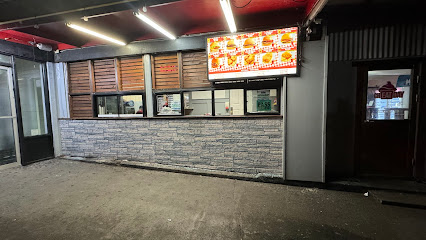
Veterans Memorial Stadium
Veterans Memorial Stadium: A hub of sports and culture in Tafuna, where thrilling local events showcase the spirit of American Samoa.

Pago Airport Inn
Experience the perfect blend of comfort and convenience at Pago Airport Inn, your ideal gateway to explore the beauty of American Samoa.
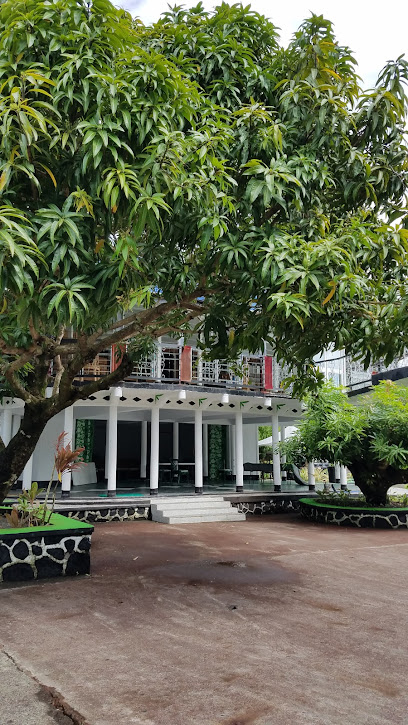
American Samoa Visitors Bureau (ASVB)
Explore American Samoa's breathtaking landscapes and rich culture with the guidance of the American Samoa Visitors Bureau.
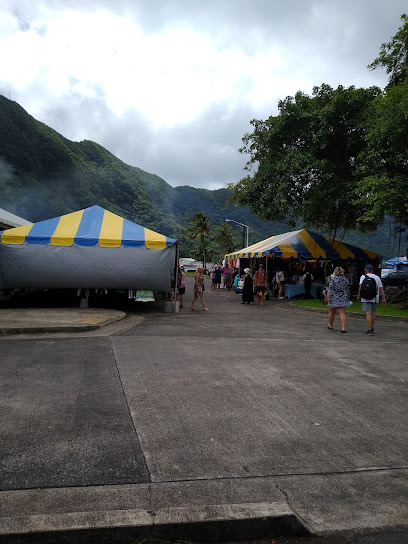
Jean P Haydon Museum
Explore the cultural treasures of American Samoa at the Jean P Haydon Museum, where history and heritage come alive for every visitor.
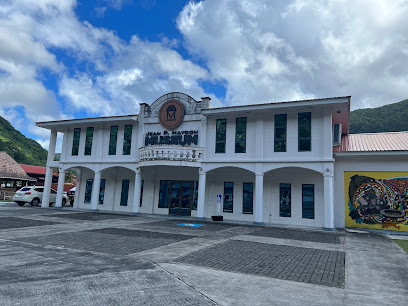
Essential places to dine
McDonald's
Experience fast food favorites at McDonald's in Tafuna – where familiar tastes meet local charm!
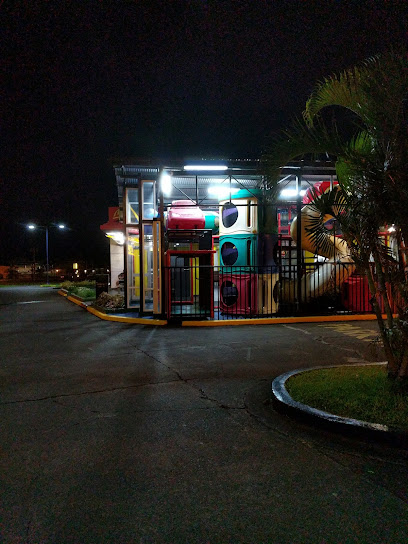
Tisa's Barefoot Bar
Experience authentic Samoan cuisine at Tisa's Barefoot Bar while soaking in stunning ocean views and vibrant island culture.
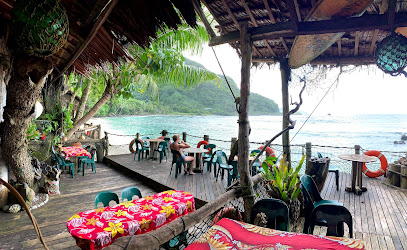
DDW Restaurant
Experience authentic local flavors at DDW Restaurant in Utulei – where every dish tells a story amidst breathtaking scenery.
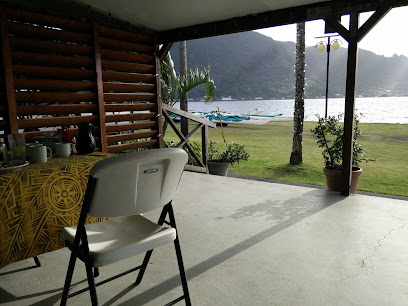
The Koko Bean Cafe
Discover the culinary delights at The Koko Bean Cafe – where local flavors meet cozy vibes in Nu'uuli.
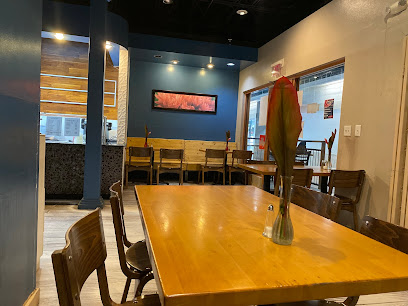
Carl's Jr.
Savor classic American fast food delights at Carl's Jr., your perfect stop in Nuuuli Village for tasty burgers and shakes.

Paradise Pizza
Experience authentic island flavors at Paradise Pizza in Pago Pago - where delicious pizza meets breathtaking views.
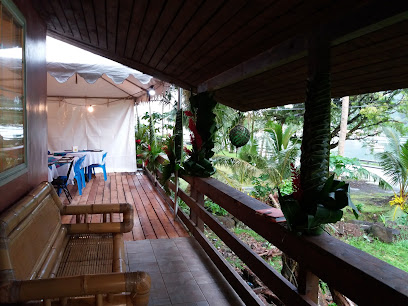
Cecilias Restaurant & Bar
Discover authentic Samoan flavors at Cecilia's Restaurant & Bar in Pago Pago - a culinary gem offering fresh seafood and traditional dishes.
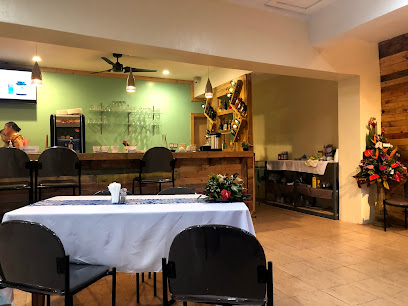
Milovales Burgers and Fish & Chips
Experience the vibrant flavors of Milovales Burgers and Fish & Chips in Nu'uuli – where fast food meets local charm!
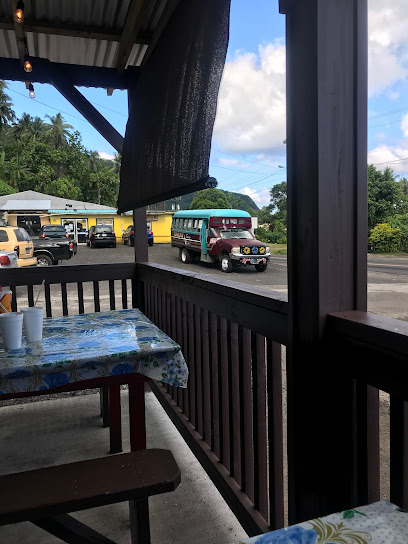
Tropical Chicken and Pizza
Discover the delightful flavors of Tropical Chicken and Pizza in Pago Pago, where every slice tells a story of culinary excellence.

Oasis
Experience authentic Korean flavors at Oasis in Tafuna - A must-visit destination for food lovers exploring the Pacific.
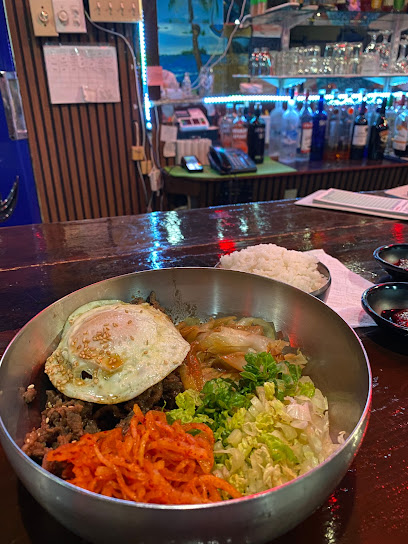
Flying Fox Gastropub
Experience authentic South Pacific cuisine at Flying Fox Gastropub – where every dish tells a story of flavor and culture.

T J D - Pho Vietnamese Restaurant
Discover authentic Vietnamese cuisine at T J D - Pho Restaurant in Western District; a culinary journey filled with flavor awaits every visitor.
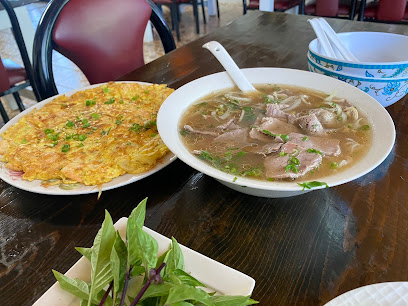
Manuia Restaurant
Discover authentic Korean flavors at Manuia Restaurant in Tafuna - a must-visit dining destination for food lovers.
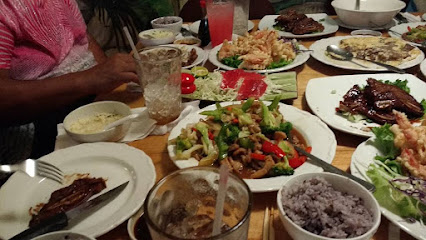
Nina’s Restaurant
Experience authentic Samoan cuisine at Nina's Restaurant in Tafuna - where every meal is a celebration of local flavors.
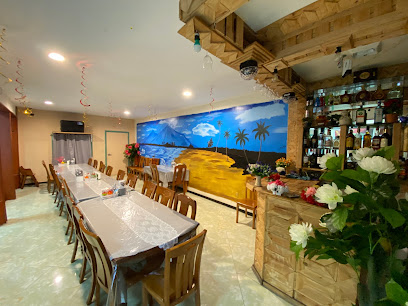
Mama's Kitchen
Experience authentic local cuisine at Mama's Kitchen in Nu'uuli – where every meal feels like home.
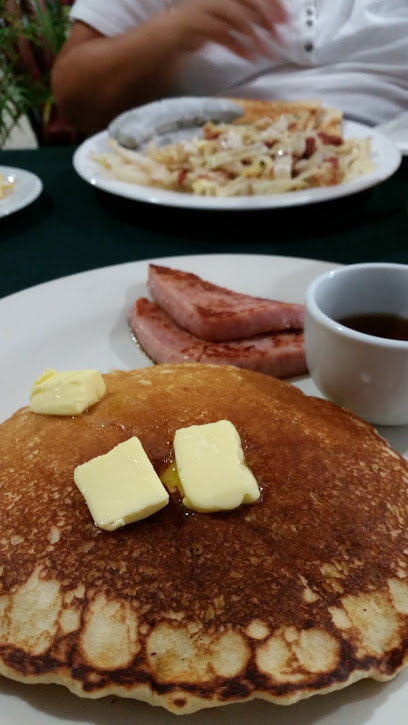
Markets, malls and hidden boutiques
Laufou Shopping Center
Explore Laufou Shopping Center: A vibrant shopping destination in Nu'uuli, offering unique local products, diverse cuisines, and a lively atmosphere for all.
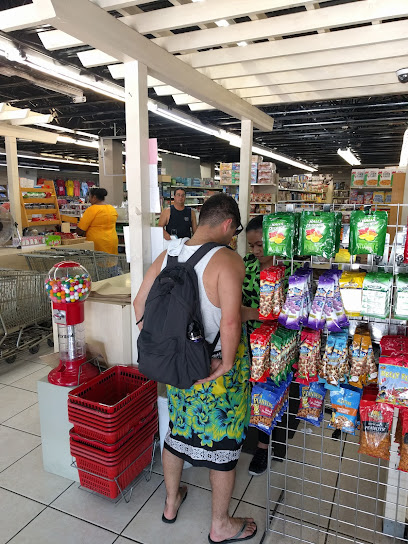
Cost.U.Less
Discover Cost.U.Less in Pago Pago for a diverse selection of groceries and household goods, perfect for tourists seeking convenience and value.
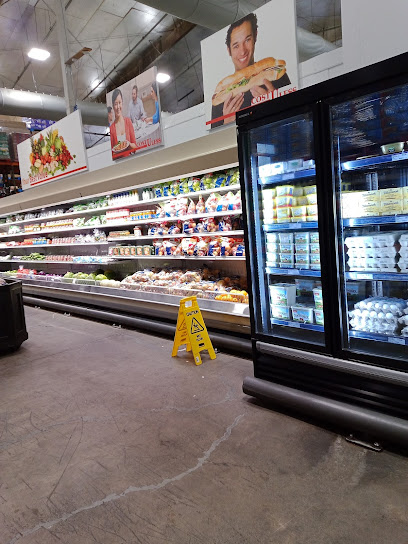
Manu'a Store
Experience the unique charm of Manu'a Store in Nu'uuli, offering a diverse selection of home goods and local crafts that capture the essence of the region.
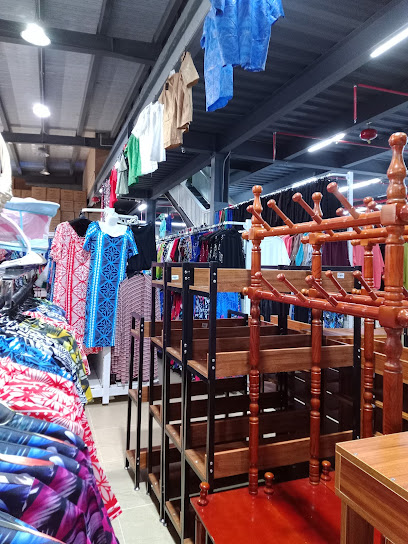
OFFDAROCK TATTOOS AMERICAN SAMOA
Discover the artistry of OffdaRock Tattoos in American Samoa, where your tattoo becomes a lasting piece of island culture and personal expression.
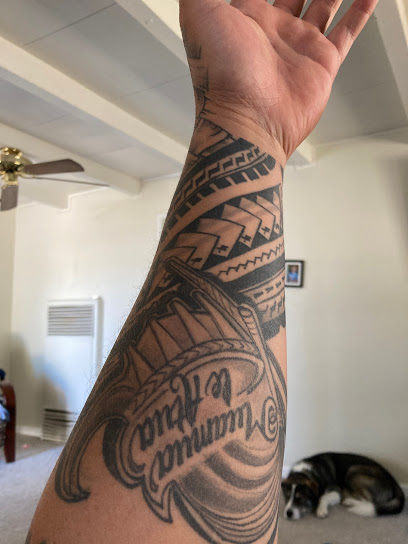
KT Mart
Discover the vibrant styles of American Samoa at KT Mart, your go-to clothing store for unique fashion and local finds.
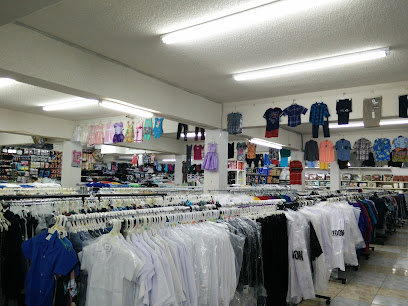
Skyview Incorporated
Discover the flavors of Samoa at Skyview Incorporated, your go-to grocery store in Pago Pago for fresh local produce and international delights.
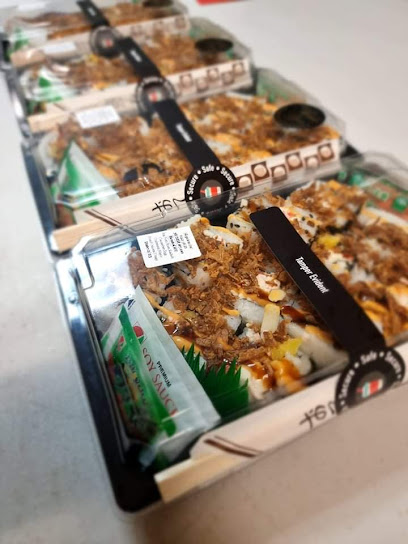
Tropik Traders
Experience the vibrant culture of Samoa through unique clothing and accessories at Tropik Traders in Nu'uuli.
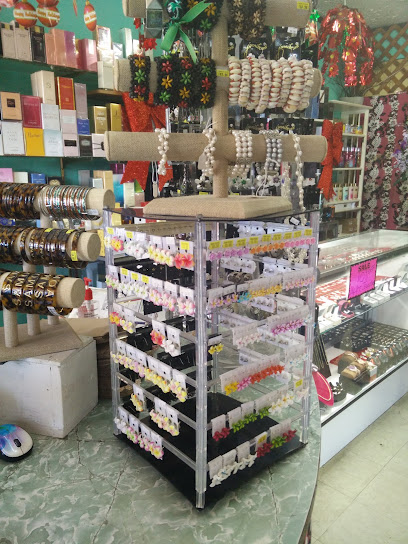
Island Image Creations
Explore the vibrant fabrics and sewing supplies at Island Image Creations, a must-visit shop in Nu'uuli for all sewing enthusiasts.
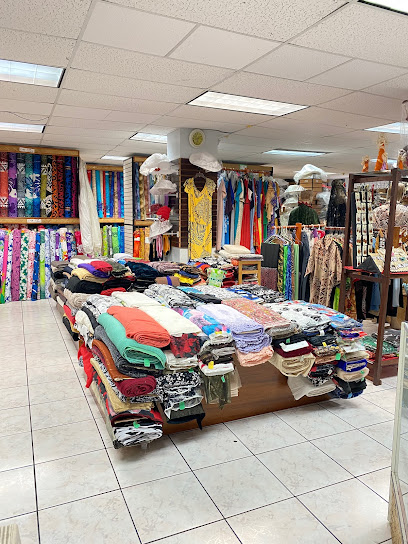
Tedi Of Samoa
Explore the vibrant Tedi Of Samoa for unique crafts, local souvenirs, and an authentic taste of Samoan culture in Fagatogo.
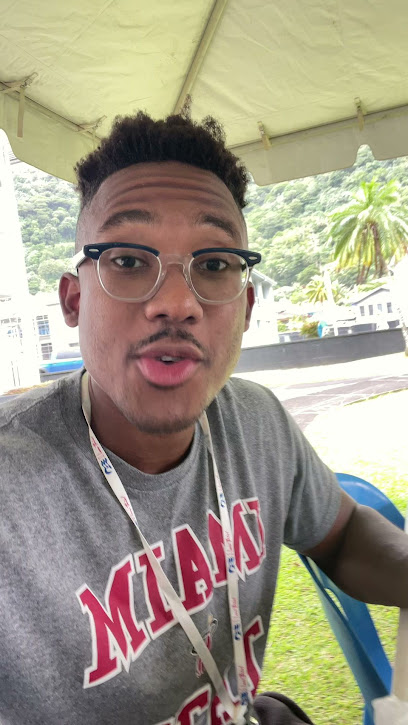
Pago Supermarket Store
Discover a treasure trove of local and international products at Pago Supermarket, your essential stop in Pago Pago for delightful culinary experiences.
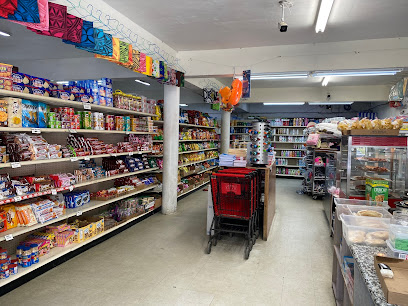
YSJ ltd
Discover local flavors and essentials at YSJ Ltd, a charming grocery store in Tafuna, Samoa offering a taste of authentic Samoan culture.

Downtown Ink Tattoo Studio
Experience the artistry of tattoos at Downtown Ink Tattoo Studio in Pago Pago, where creativity meets professionalism and every design tells your unique story.

Amy's Gifts Shop
Explore Aua's local culture through unique gifts and handcrafted treasures at Amy's Gifts Shop, your perfect souvenir destination.
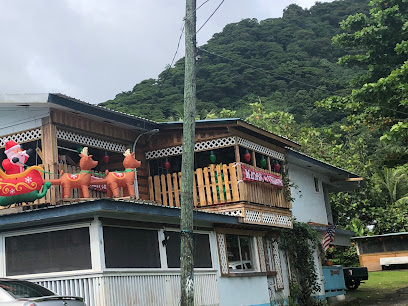
KOKOLAND STORE
Explore the vibrant KOKOLAND STORE in Tafuna, your go-to supermarket for local delicacies and essentials during your island adventure.
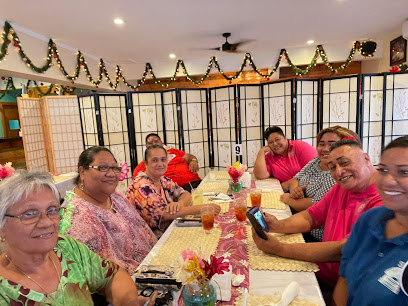
O&O Inc.
Explore O&O Inc. in Nu'uuli for a unique blend of fashion, friendliness, and tasty snacks, perfect for all ages and styles.
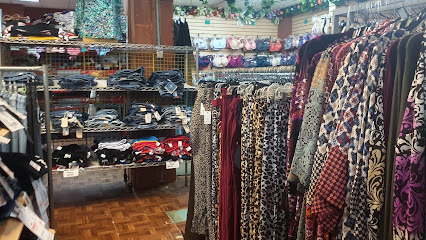
Essential bars & hidden hideouts
Sadie's by the Sea
Discover the coastal charm and culinary delights of Sadie's by the Sea in Pago Pago, American Samoa - a perfect blend of relaxation and flavor.

Tisa's Barefoot Bar
Experience the flavor of the islands at Tisa's Barefoot Bar, where delicious cuisine meets stunning beachfront views.
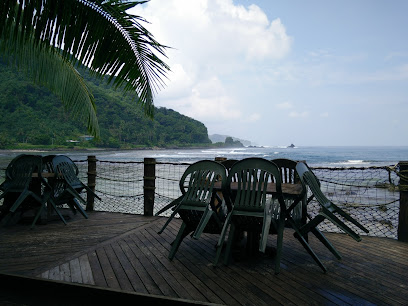
Cecilias Restaurant & Bar
Experience the vibrant flavors of Samoa at Cecilia's Restaurant & Bar, where local cuisine meets warm hospitality in the heart of Pago Pago.
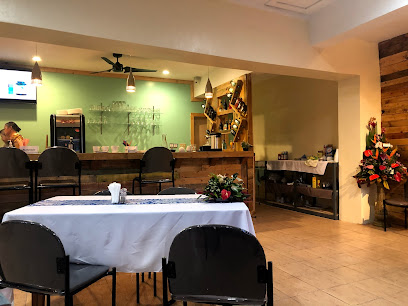
Paradise Pizza
Experience the authentic taste of Paradise Pizza in Pago Pago with delicious local ingredients and a friendly atmosphere, perfect for tourists.
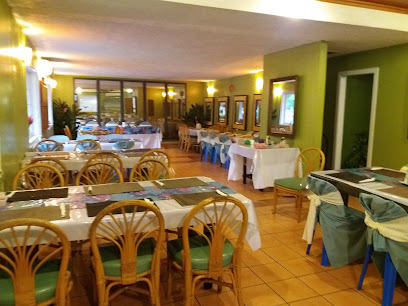
Tropical Chicken and Pizza
Experience the vibrant flavors of American Samoa at Tropical Chicken and Pizza, the perfect blend of delicious cuisine and tropical ambiance.
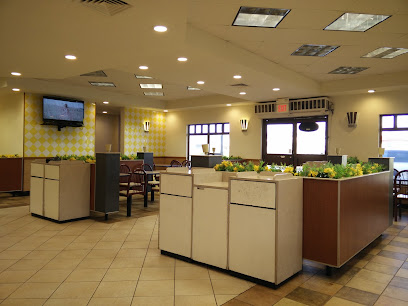
Oasis
Experience a culinary journey at Oasis, Tafuna's premier Korean restaurant, offering authentic flavors and warm hospitality.
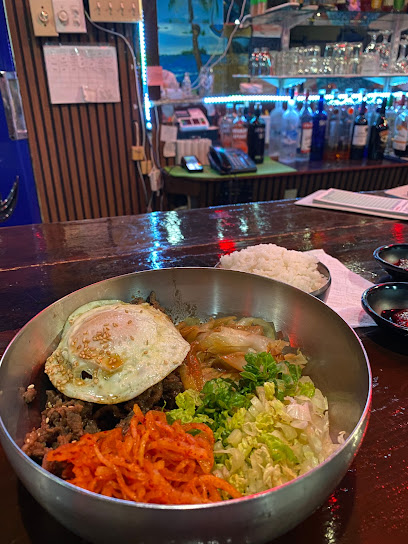
Flying Fox Gastropub
Discover the vibrant flavors of Pago Pago at Flying Fox Gastropub, where local ingredients meet culinary creativity in a stunning atmosphere.
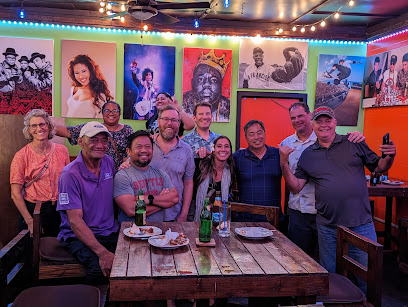
Paradise Bar & Grill
Experience the lively ambiance and delectable local cuisine at Paradise Bar & Grill in Nu'uuli, a must-visit destination for tourists.
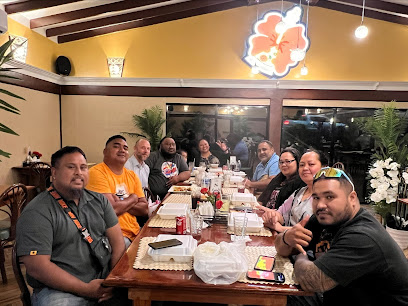
Sadies Thompson Inn
Discover the serene beauty of Pago Pago at Sadies Thompson Inn, where comfort meets hospitality in a stunning island setting.

Goat Island Cafe
Experience the flavors of Utulei at Goat Island Cafe, where every meal is a celebration of local cuisine and stunning natural beauty.
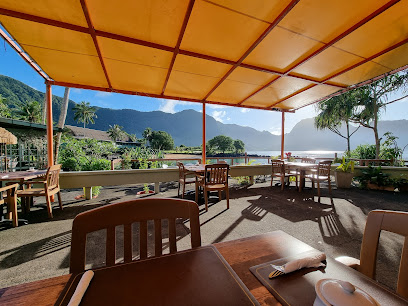
Emelio's Restaurant
Experience the authentic flavors of Samoan cuisine at Emelio's Restaurant in Pago Pago, where local ingredients meet traditional recipes in a warm atmosphere.
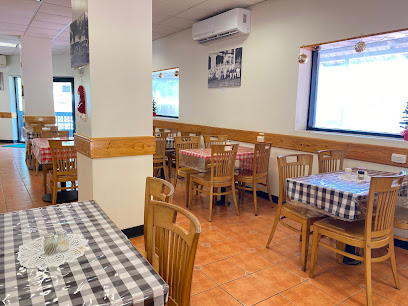
Moon Korean Restaurant
Experience the essence of Korean cuisine with authentic dishes and warm hospitality at Moon Korean Restaurant in Leloaloa.
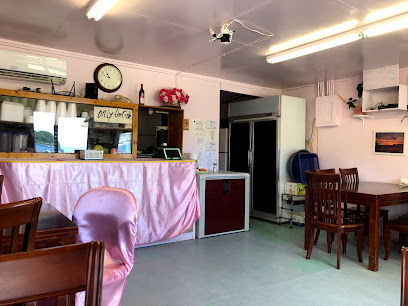
Faga'alu Restaurant
Discover the rich flavors of Vietnam at Faga'alu Restaurant, where every dish is a celebration of culinary tradition.
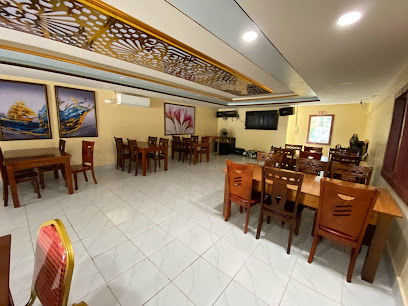
Food Bar
Discover the vibrant flavors of fast food at Food Bar in Tafuna, where quick bites meet delightful taste in the heart of American Samoa.
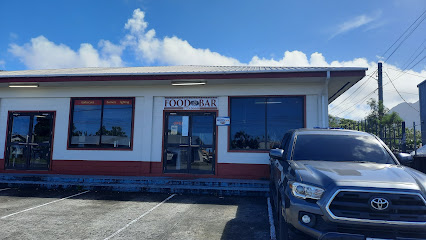
Good Vibes Bar And Grill
Experience a vibrant dining atmosphere at Good Vibes Bar And Grill, where families enjoy delicious meals and local culture in Tafuna.

Local Phrases
-
- HelloTalofa
[Tah-loh-fah] - GoodbyeFa
[Fah] - YesIoe
[Ee-oh-eh] - NoLeai
[Leh-ai] - Please/You're welcomeFa'amalie
[Fah-ah-mah-lee-eh] - Thank youFa'afetai
[Fah-ah-feh-tah-ee] - Excuse me/SorryTulou
[Too-loh-oo] - How are you?O ai oe?
[Oh-ai-oh-eh] - Fine. And you?Lelei. O a oute?
[Leh-leh-ee. Oh-ah-oh-oo-teh] - Do you speak English?O lea e tautala i le fa'ailoa?
[Oh-leh-ah-eh-tah-oo-tah-lah-ee-leh-fah-ai-loh-ah] - I don't understandE le mafai ona malamalama
[Eh-leh-mah-fai-oh-nah-mah-lah-mah-lah-mah]
- HelloTalofa
-
- I'd like to see the menu, pleaseFa'amalie, ou te fia vaega i le menu
[Fah-ah-mah-lee, oh-oo-teh-fee-ah-vah-eh-gah-ee-leh-men-oo] - I don't eat meatE le auai i le kuka
[Eh-leh-ah-oo-ah-ee-ee-leh-koo-kah] - Cheers!Manuia!
[Mah-noo-ee-ah] - I would like to pay, pleaseFa'amalie, ou te fia totogi
[Fah-ah-mah-lee, oh-oo-teh-fee-ah-toh-toh-gee]
- I'd like to see the menu, pleaseFa'amalie, ou te fia vaega i le menu
-
- Help!Fesoasoani!
[Feh-soh-ah-soh-ah-nee] - Go away!Alu atu!
[Ah-loo-ah-too] - Call the Police!Vala'au le Ofisa o le Fa'amasinoga!
[Vah-lah-ah-oo-leh-oh-fee-sah-oh-leh-fah-ah-mah-see-noh-gah] - Call a doctor!Vala'au le foma'i!
[Vah-lah-ah-oo-leh-foh-mah-ee] - I'm lostUa ou te luku
[Oo-ah-oh-oo-teh-loo-koo] - I'm illUa ou te mae'a
[Oo-ah-oh-oo-teh-mah-eh-ah]
- Help!Fesoasoani!
-
- I'd like to buy...Ou te fia fa'atau...
[Oh-oo-teh-fee-ah-fah-ah-tah-oo] - I'm just lookingOu te vaai
[Oh-oo-teh-vah-ah-ee] - How much is it?E lelei le totogi?
[Eh-leh-leh-ee-leh-toh-toh-gee] - That's too expensiveO lelei le taavale
[Oh-leh-leh-ee-leh-tah-ah-vah-leh] - Can you lower the price?Mafai ona fa'ataga le totogi?
[Mah-fai-oh-nah-fah-ah-tah-ngah-leh-toh-toh-gee]
- I'd like to buy...Ou te fia fa'atau...
-
- What time is it?O le a le taimi?
[Oh-leh-ah-leh-tah-ee-mee] - It's one o'clockUa le tasi
[Oo-ah-leh-tah-see] - Half past (10)I le va le aso (10)
[Ee-leh-vah-leh-ah-soh-ten] - MorningTaeao
[Tah-eh-ah-oh] - AfternoonAfiafi
[Ah-fee-ah-fee] - EveningIli
[Ee-lee] - YesterdayAnanafi
[Ah-nah-nah-fee] - TodayAso nei
[Ah-soh-nay-ee] - TomorrowAso ma le po
[Ah-soh-mah-leh-poh] - 1Tasi
[Tah-see] - 2Lua
[Loo-ah] - 3Tolu
[Toh-loo] - 4Fa
[Fah] - 5Lima
[Lee-mah] - 6Ono
[Oh-noh] - 7Fitu
[Fee-too] - 8Valu
[Vah-loo] - 9Iva
[Ee-vah] - 10Ulu
[Oo-loo]
- What time is it?O le a le taimi?
-
- Where's a/the...?O fea le...?
[Oh-feh-ah-leh] - What's the address?O le a le tuatusi?
[Oh-leh-ah-leh-too-ah-too-see] - Can you show me (on the map)?Mafai ona fa'ailoa mai ia te a'u (i le mapa)?
[Mah-fai-oh-nah-fah-ah-ee-loh-ah-mah-ee-ee-ah-teh-ah-oo-ee-i-leh-mah-pah] - When's the next (bus)?Aso e pei o le a toe sau (autapā)
[Ah-soh-eh-peh-ee-oh-leh-ah-toh-eh-sow-ah-oo-tah-pah] - A ticket (to ....)Tiketi (i le ....)
[Tee-keh-tee-ee-leh]
- Where's a/the...?O fea le...?
History of Pago Pago
-
Long before European explorers arrived, the Samoan archipelago, including what is now American Samoa, was settled by Polynesians around 1000 BCE. The indigenous Samoan culture is rich with traditions, including the 'fa'a Samoa' or 'The Samoan Way,' which emphasizes community, family, and respect for elders. Pago Pago, located in the Tutuila island, served as a central hub for these early communities, fostering trade, social gatherings, and cultural ceremonies.
-
The first Europeans to make contact with the Samoan islands were Dutch explorers Jacob Roggeveen in 1722 and French explorer Louis-Antoine de Bougainville in 1768. However, it was the arrival of missionaries in the 1830s that began to significantly influence Samoan culture and society. Pago Pago became a point of interest due to its natural harbor, which was crucial for refueling and restocking ships.
-
In 1878, the United States signed a treaty with the Samoan chiefs, establishing a naval station in Pago Pago Harbor. This agreement marked the beginning of American involvement in the region. The treaty allowed the U.S. to build a coaling station for its Pacific fleet, significantly impacting the local economy and infrastructure.
-
The Tripartite Convention of 1899 between the United States, Germany, and the United Kingdom resulted in the partition of the Samoan Islands. The eastern islands, including Tutuila and its Pago Pago harbor, came under American control, forming what is now known as American Samoa. This division shaped the political boundaries and international relationships of the islands.
-
During World War II, Pago Pago played a critical role as a strategic military base for the United States. The harbor and surrounding areas were fortified, and troops were stationed there to protect the Pacific routes. This period brought significant military infrastructure and an influx of American personnel, influencing local culture and economy.
-
After World War II, Pago Pago transitioned from a primarily military outpost to a more civilian-focused community. The development of tuna canneries, particularly the StarKist plant, became a major economic driver. The establishment of the American Samoa government in 1967 further spurred infrastructure and social development. Today, Pago Pago remains the administrative and economic center of American Samoa, blending traditional Samoan culture with modern influences.
Pago Pago Essentials
-
Pago Pago is accessible primarily via air travel. The main gateway is Pago Pago International Airport (PPG), located in Tafuna. There are regular flights from Honolulu, Hawaii, which is the most common route for international travelers. Once you arrive at the airport, you can take a taxi or arrange for shuttle services to get to different parts of the island.
-
Pago Pago has limited public transport options, but taxis are readily available and offer a convenient way to get around. Car rentals are also an option and allow for more flexibility to explore the island at your own pace. Local buses, known as 'aiga buses', are colorful and inexpensive, providing a more authentic experience, although they may not run on a fixed schedule.
-
The official currency in American Samoa is the US Dollar (USD). Credit cards are accepted in most hotels, restaurants, and larger stores, but it is advisable to carry cash for smaller establishments and markets. ATMs are available, but it's a good idea to have some cash on hand before you arrive.
-
Pago Pago is generally a safe destination for tourists. However, it's important to take standard precautions such as avoiding isolated areas at night and keeping an eye on your belongings in crowded places. There are no specific high-crime areas targeting tourists, but staying vigilant is always a good practice.
-
In case of an emergency, dial 911 for immediate assistance. Pago Pago has medical facilities, including the LBJ Tropical Medical Center located in Faga'alu, which can handle most medical emergencies. It is recommended to have travel insurance that covers medical emergencies. For minor health issues, over-the-counter medications are available at local pharmacies.
-
Fashion: Do dress modestly, especially when visiting villages and religious sites. Avoid wearing revealing clothing. Religion: Do respect local customs and traditions. Always ask for permission before entering churches and take off your shoes when entering homes. Public Transport: Do be respectful and patient. Seating is often limited on 'aiga buses.' Greetings: Do greet people with a smile and a friendly 'Talofa'. A handshake is also appropriate. Eating & Drinking: Do try local delicacies and accept food offerings graciously. Don’t refuse hospitality, as it is considered impolite.
-
To experience Pago Pago like a local, visit the local markets such as Fagatogo Market, where you can buy fresh produce and traditional Samoan goods. Engage with locals, who are often friendly and willing to share stories about the island's history and culture. Don't miss visiting the National Park of American Samoa for breathtaking natural beauty and hiking opportunities. For a unique experience, attend a traditional 'fiafia' night to enjoy Samoan dance, music, and food.
Trending Landmark in Pago Pago
-
Sadie's by the Sea
-
Papaseea Sliding Rocks
-
Laufou Shopping Center
-
Regal Nu'uuli Place Twin
-
National Park of American Samoa
-
Pago Pago International Airport
-
Tisa's Barefoot Bar
-
Pago Pago Harbour
-
National Park of American Samoa Visitor Center
-
Pritchard's Bakery
-
Milovales Burgers and Fish & Chips
-
Veterans Memorial Stadium
-
Pago Airport Inn
-
American Samoa Visitors Bureau (ASVB)
-
Jean P Haydon Museum
Nearby Cities to Pago Pago
-
Things To Do in Fagatogo
-
Things To Do in Aua
-
Things To Do in Tafuna
-
Things To Do in Leone
-
Things To Do in Lalomanu
-
Things To Do in Apia
-
Things To Do in Mulifanua
-
Things To Do in Salelologa
-
Things To Do in Savai'i
-
Things To Do in Fagamalo
-
Things To Do in Manase
-
Things To Do in Asau
-
Things To Do in Falealupo
-
Things To Do in Ha'ano
-
Things To Do in Foa



